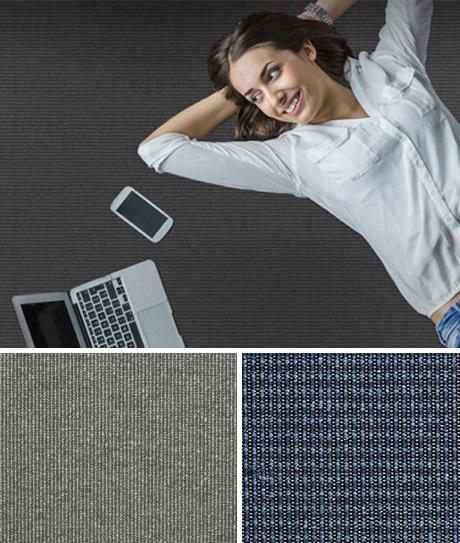Creating a carpet maintenance program
It’s vital that you understand the importance of proper carpet maintenance, then, you are ready to create a simple but important maintenance program for your natural fibre carpet. Here are five simple steps in a preventive maintenance program.
Step 1: Make preventive maintenance a priority
Preventing soil from entering the environment is easier and less expensive than removing it from the carpet.
- Keep outside areas clean
Outside maintenance helps minimise the most common source of soil. The cleaner you keep the entry points, garages, patios, ensuites, kitchens and other external areas outside your carpeted rooms or around your home or building, the less dirt will be tracked inside and onto your carpets.
- Use soil barriers
Entry mats, grates, removable elevator carpets all help collect soil before it can be tracked throughout your home or building. Vacuum daily, clean frequently and change often for the best results.
- Protect desk areas
Chair protector mats under your desk chairs in the home or office prevent caster wheels from crushing your carpet and grinding in soil, where you continually roll.
- Specify eating, drinking and smoking areas
By restricting these activities to limited areas, you can help control certain difficult kinds or soil.
Step 2: Manage soil with regular vacuuming
Regular vacuuming is the most important dry soil management procedure. Effective vacuuming removes dry soil so that it cannot spread to other carpeted area. The level of effective vacuuming has two components: Frequency and equipment type. Both frequency and quality will help to ensure your carpets stay looking cleaner and fresher for longer.
Vacuuming Frequency
- Heavy to moderate traffic areas (entrances, hallways, elevator lobbies, reception areas, etc.) all should be vacuumed daily.
- Light traffic areas (bedrooms, living, dining, offices, conference rooms etc.) should be vacuumed at least once per week)
Equipment Type
- Powerhead upright vacuums are very effective machines for thoroughly cleaning any traffic areas around the home and or heavy to moderate commercial traffic areas. This vacuum uses two motors to clean. One motor drives a beater-brush bar that knocks the dirt loose, while the second motor provides the suction that pulls dirt into the vacuum bag.
- Barrel vacuums can be very effective machines depending on their design. For the most part, they generally great for around the home and should only be used in some light commercial traffic areas. They are generally less powerful than upright vacuums, but easier to maneuver around furniture and can be very effective if properly maintained.
Carpet sweepers may be used to remove small surface litter in high visibility areas for a quick clean up. However, they are not an effective cleaning method and should not take the place of thorough vacuuming.
Step 3: Promptly remove spills and stains
- Blot as much of the spill as you can with an absorbent towel. Always work toward the center of the spill. Do not rub! If the spill is solid or semisolid, gently scrape off what you can using a dull knife.
- Apply a general-purpose carpet spotter to the spill. This is a detergent solution that is specially made for use on carpets. Never use other kinds of cleaning solutions, such as bleach. These may permanently damage the carpet.
- Tamp or pat in the carpet spotter with a tamping brush.
- Wait three minutes, then blot again.
- Rinse with clean water, then blot as dry as possible.
Professional Cleaning:
Sydney
Melbourne
Brisbane and Gold Coast
Perth
Complete Carpet Management – Ph: 08 9401 1000
- Hot water extraction
- Dry compound
- Foam shampoo
- Rotary shampoo

